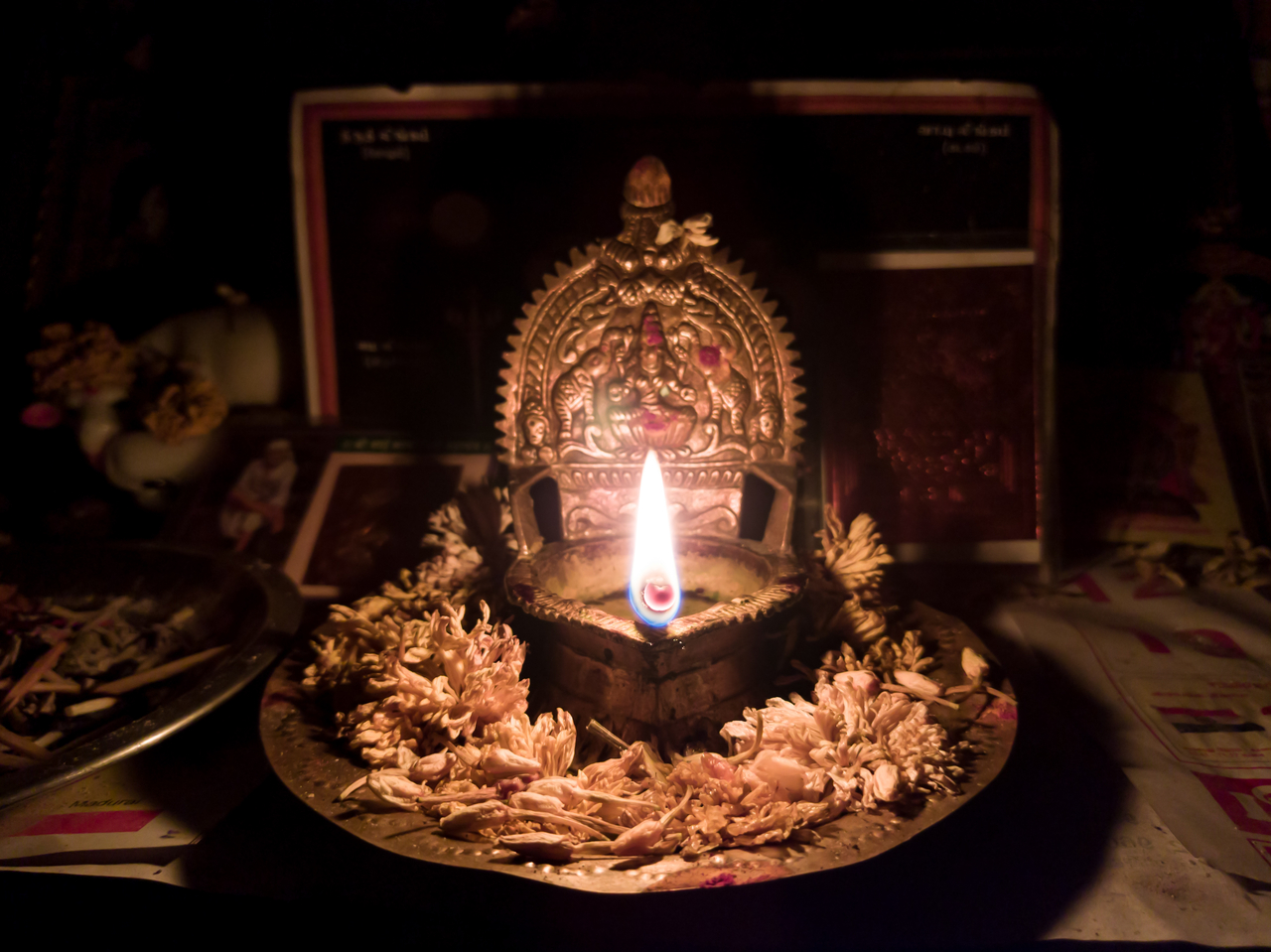Lakshmi and Hinduism

Traditional Ways to Worship Lakshmi
Lakshmi is treated with great reverence, and there are many ways in which she is honored and invoked. She is worshipped in Hindu temples around the world and has many temples named after her, and she is also honored in homes, offices, schools, and businesses.
In a temple, Lakshmi's holy rites are typically offered by a priest (also known as a pandit). Priests are also invited to homes and businesses to perform a puja for a family or group of people. Lakshmi's worship, like all Hindu worship, is based on time-honored prescriptions and religious protocol, with specific chants, rituals, and devotions. It is magical to watch them perform sacred rituals with pure dedication and with such expertise. There are also many customs in which devotees, usually women, honor Lakshmi outside of traditional temple settings, which are beautiful and meaningful.
Hinduism is one of the oldest world religions and predates Judaism and Christianity. It has layers of different religious protocols, philosophies, sects, and moral codes. Its scriptures are the Vedas—Rig Veda, Sama Veda, Yajur Veda, and Atharva Veda. Their holy books and epic stories include The Upanishads, The Puranas, The Bhagavad Gita, The Ramayana, as well as various Shastras and Sutras. Lakshmi appears and is honored in a number of these texts. There are also many holy texts devoted to goddess worship, such as The Lakshmi Tantra, The Devi Bhagavata Purana, The Devimahatmya, and The Devi Gita.
Hinduism Through Its Scriptures, a class offered by HarvardX on edx, Professor Neelima Shukla-Bhatt, explains it this way. "What we have come to know as 'Hinduism' is one of the oldest world religions. It is a rich mosaic of a broad range of religious ideas, practices, and communities native to South Asia that has evolved over more than three millennia, interweaving threads from many cultures and worship of the Divine in diverse forms. Within South Asia, India, and Nepal are Hindu-majority countries today. But the ideas and practices that form Hinduism have also been prevalent in parts of Southeast Asia since the first millennium of the Common Era. Since the nineteenth century, Hinduism has reached many parts of the globe with Indian immigrants and with new followers who embraced it in these lands."
Lakshmi's culture is a vast and complex tapestry with some shared core beliefs, such as the divine manifests in many forms, and one can worship one or many gods and goddesses. The soul is reborn after each lifetime. The Vedas are sacred, and Sanskrit is a common thread that has united people through the millennia. The ancient and accepted worship of the Divine Feminine is something that sets Hinduism apart from many of the world's religions.
Hinduism has many well-defined approaches to worship, and yet there is flexibility and diversity. Though priests offer traditional holy rites to Lakshmi, worship may be influenced by local customs. There are many different regions, hundreds of different dialects, and an untold number of different ways that Hindus honor Lakshmi among local people. Hindus also regularly practice home puja, where they honor Lakshmi or any deities at a home shrine daily or on special occasions. There are also pujas, or vrats, in which devotees, often women, gather together to seek Lakshmi's special boons (blessings) and support.
Women often volunteer to help within the temples. They also create Lakshmi celebrations in the home and initiate gatherings with other devotees. Sometimes they lead prayers, chants, and devotional singing. Anyone can partake. The key to observing or attending traditional services is to be respectful to Lakshmi and honor the sacred environment and the people conducting the rituals. Be prepared to take your shoes off and leave them in a designated area, as a sign of respect. Sit, watch, learn, and take in the beauty of the experience. (Note: The first time I participated in Lakshmi puja, I worried I would do something wrong. The more I experienced traditional worship, the more comfortable and familiar it became. One day, I found myself sitting next to the Lakshmi icon in my local temple with the women volunteers, helping to string garlands for Lakshmi and other deities. It was an honor.)
Observing how Lakshmi is honored is one way to get to know her. Hindu temples are (generally) welcoming to all and allow everyone who attends to be part of their rituals. You may find there are aspects that you can lovingly adapt in your own spiritual practice—like lighting candles, offering flowers, and singing her songs.